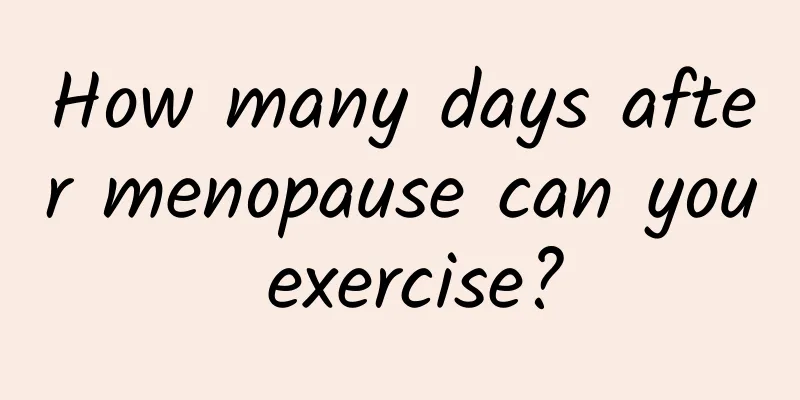How many days after menopause can you exercise?

|
It is usually recommended to observe your physical condition after menopause. After confirming that there is no obvious discomfort, you can do moderate exercise, but avoid strenuous exercise. Generally, you can gradually resume light exercise 3-5 days after menopause, especially for those with mild menstrual symptoms or regular cycles, the recovery speed may be faster. The exercise arrangement after amenorrhea needs to be determined in combination with personal constitution, menstrual experience and overall health status. If you have severe abdominal pain, dizziness or physical weakness during amenorrhea, it is recommended to get enough rest and adjust to ensure that your body recovers completely. If the symptoms are mild and you are in good health, you can start with low-intensity exercise such as yoga and walking, and gradually transition to moderate-intensity strength training or running, but avoid high-intensity explosive exercise such as jumping training to avoid aggravating pelvic congestion or causing other complications. If amenorrhea is a long-term phenomenon or is accompanied by sudden changes in weight, mood swings, etc., potential endocrine problems should be considered and medical treatment should be sought in time. The exercise arrangement after amenorrhea needs to be determined in combination with personal constitution, menstrual experience and overall health status. If you have severe abdominal pain, dizziness or physical weakness during amenorrhea, it is recommended to get enough rest and adjust to ensure that your body recovers completely. If the symptoms are mild and you are in good health, you can start with low-intensity exercise such as yoga and walking, and gradually transition to moderate-intensity strength training or running, but avoid high-intensity explosive exercise such as jumping training to avoid aggravating pelvic congestion or causing other complications. If amenorrhea is a long-term phenomenon or is accompanied by sudden changes in weight, mood swings, etc., potential endocrine problems should be considered and medical treatment should be sought in time. When resuming exercise, you should pay attention to maintaining adequate water intake, avoid exercising on an empty stomach, and choose sportswear with good breathability to improve comfort. If you experience menstrual abnormalities, fatigue, or severe pain after resuming exercise, you should stop exercising and consult a professional doctor. 7-10 days after the menstrual period, this is the follicular phase, and physical strength recovers faster. At this time, gradually increasing the intensity of exercise is more helpful to improve the body's metabolism and health level. |
<<: What are the symptoms of postmenopausal cervical adhesions?
>>: What tests should be done to find out the causes of threatened miscarriage?
Recommend
What are the reasons for irregular menstruation in women? How can women regulate and improve irregular menstruation?
Traditional Chinese medicine believes that there ...
Prevention of vaginitis
Vaginitis is an inflammation of the vaginal mucos...
A brief introduction to the symptoms of vaginitis
What are the symptoms of vaginitis? What are the ...
Women who like to eat carrots often are prone to irregular menstruation
Now experts tell you that eating too much carrots...
Three causes of vaginitis in unmarried women
Vaginitis is a type of female gynecological disea...
A brief analysis of the hazards of four major painless abortions
Painless abortion is a more frequently used abort...
Take a look at the common symptoms of cervical hypertrophy
What are the common symptoms of cervical hypertro...
Dietary taboos for irregular menstruation
Irregular menstruation is a common gynecological ...
What should you pay attention to when you have endometriosis?
Endometriosis is a serious disease that affects p...
Does pelvic inflammatory disease cause bleeding? What are the other symptoms?
There are many factors that cause women to suffer...
What are the specific types of ovarian cysts?
What are the specific types of ovarian cysts? Ova...
Effective ways to relieve dysmenorrhea in women
Dysmenorrhea is a common disease among women, esp...
Do you need to do squats to get a perky butt? Switch to the "bridge pose" and it's easy to get started!
Squats are undoubtedly a very good way to train y...
Experts talk about whether acute cervicitis is serious or not?
"Is acute cervicitis serious?" Many peo...
What are the main symptoms of adnexitis?
Adnexitis is a gynecological disease with a relat...









